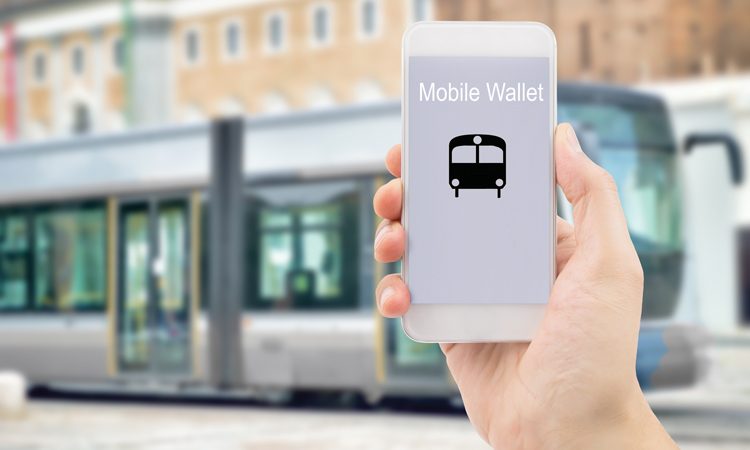Seamless travel…dream or reality?
- Like
- Digg
- Del
- Tumblr
- VKontakte
- Buffer
- Love This
- Odnoklassniki
- Meneame
- Blogger
- Amazon
- Yahoo Mail
- Gmail
- AOL
- Newsvine
- HackerNews
- Evernote
- MySpace
- Mail.ru
- Viadeo
- Line
- Comments
- Yummly
- SMS
- Viber
- Telegram
- Subscribe
- Skype
- Facebook Messenger
- Kakao
- LiveJournal
- Yammer
- Edgar
- Fintel
- Mix
- Instapaper
- Copy Link
Posted: 23 June 2017 | Laurent Cremer - OSPT Alliance | No comments yet
Public transport operators face numerous challenges to incorporating smart payment technologies to their systems. Laurent Cremer, Executive Director of the OSPT Alliance, explores the options available to both vendors and operators in pursuit of offering the ultimate in passenger convenience: seamless travel.


‘In 2012, the smart transport market in Europe was sized at US $320 million. The market is projected to grow at a compound annual growth rate of around 21.6%’1.
While this statistic paints a rosy picture of the European transport market, the harsh reality is that the market is lagging behind other sectors such as payments and ID when it comes to offering innovative products and services to consumers.
Today, public transit operators are beset by a wide range of competing pressures. Costs are rising, passenger numbers are growing, and the desired levels of service and customer convenience are changing.
At the same time, public transport operators are expected to operate in an increasingly savvy world where expectations about digital convergence are at odds with the growing rise in fraud, both online and in the physical world. Due to these evolving market requirements, it is becoming evident that existing proprietary legacy systems are limiting public transport operators’ ability to respond in an agile and flexible manner.
Many of today’s automated fare collection infrastructures are based on proprietary, closed loop technology. This results in public transport ‘islands’ that offer no interoperability with other transport systems or adjacent ecosystems.
As the industry moves towards higher specification cards and mobile technology, this is facilitating convergence with adjacent applications such as micropayments, urban mobility and identity. These new applications demand much higher security than is provided by existing transport schemes.
Unfortunately for public transport operators, the existing proprietary, single-vendor technologies are limiting their flexibility while increasing their risk and costs. In addition, many of today’s consumers want to use their transport tickets seamlessly across different transport modalities and geographies. A rider travelling from London to Edinburgh, for example, may need to purchase different tickets for each leg of their journey, which could include a bus, underground and train ride. At each location, the user may be required to queue to purchase a new ticket and each public transport operator will need to issue a specific ticket. Perhaps not the most time or cost-effective way to travel.
Introducing the OSPT Alliance
The OSPT Alliance2 is a vendor neutral, global association chartered to help the transit, mobile and loyalty markets move towards an open infrastructure that enables secure, cost-effective and flexible fare collection. The association develops and maintains the CIPURSE™ Specification, which addresses the need for future-proof fare collection systems with more advanced security.
Through adopting open standards, the public transport market has a real opportunity to standardise crucial parts of the automated fare collection system and leverage new technologies. Open standards bring a number of benefits, including the following:
- Providing public transport operators with a larger choice of suppliers and business models
- Increased technological innovation
- Enabling public transit operators to capitalise on compatibility between different suppliers. This includes compatibility between mobile devices and plastic smartcards, allowing a phased introduction of new technologies, while protecting existing infrastructure investments.
As public transport operators look to offer ‘seamless’ travel that enhances consumer experience, two modes of payments that are causing a huge buzz in the industry are mobile payments and account-based ticketing. Here, we will look at how these payment methodologies have the potential to revolutionise the public transport market.


Mobile ticketing has the potential to enhance transport operations
Mobile payments: A game changer for public transport?
Mobile payments are second nature for today’s tech-savvy shoppers who now use their mobile device to pay for goods in a shop, pay a taxi fare, or transfer money to a peer. Mobile ticketing, however, is not quite the same success story. Mobile ticketing has the potential to enhance transport operations and provide a real-time communication channel with the passenger. So why is it not widely available today?
For public transport operators, the complexities and associated costs of updating infrastructures to accept mobile ticketing meant that the solution was just a pipe dream. The recent advancement of Host Card Emulation (HCE) technology, however, can make this dream a reality.
HCE is a software technology that allows direct contactless communication to a mobile application that implements smartcard ISO7816-4 protocol and is declared as ‘HCE’. It allows for an NFC transaction to take place on software within a smartphone rather than on a physical chip (when using a tokenised credential). HCE can leverage existing smartcard infrastructures with just limited system changes, resulting in reduced implementation costs for public transport operators and a faster time to market.
While HCE has so far been primarily used in the retail sector, it also has the potential to bring real benefits to public transport, if utilised with open standards such as those that CIPURSE is based on. By offering mobile ticketing solutions that are based on HCE and CIPURSE, public transport operators can achieve the following:
- Reduce costs. As a traveller’s smartphone is used to emulate a ticket, there is no cost to physically produce or issue the ticket. This benefit extends to reducing queues at the kiosk or ticket offices
- Offer riders a single solution to travel from A to B across different transport operators, for example taxi, metro, bike-sharing, and with different business models such as public and private
- Increase interaction with consumers through providing additional value added services such as live travel information, recommendations for ongoing travel options or parking services
- Develop and offer more innovative and reactive services to consumers. As tickets are downloaded from the internet, new fare options can be developed constantly, without having to re-issue paper or plastic tickets.
As with any new technology, there are of course challenges to overcome. However, as many of these barriers have already been addressed by the payments industry, the path to HCE adoption is gradually clearing for the public transport operators.
Of course, HCE is not the only option.
Account-based ticketing…easy as 1, 2, 3?
Account-based ticketing is described by US-based industry body, the Secure Technology Alliance, as ‘the transit fare collection system architecture that uses the back-office system to apply relevant business rules, determine the fare and settle the transaction’3.
The key benefit of account-based ticketing is that you move the right to travel from the ticket that resides with the rider – either in the form of a paper ticket, or stored value held on a smartcard/virtual smartcard hosted on a smartphone – to the back-office. Instead, the passenger carries a secure identifier, which authenticates them with the back-office and links to their payment account. This allows for the system to be constantly updated and synchronised ensuring that travellers can only undertake a ride for the amount that they have the stored value of.
For consumers, account-based ticketing negates the need to constantly top-up tickets at ticket vending machines as the value is stored in the ‘account’. Account-based ticketing is a highly desirable option for public transport operators as it supports a wide array of payment methodologies securely and cost-effectively.
Without doubt, there is a clear business model for implementing account-based ticketing in certain scenarios. The ROI will depend on the existing infrastructure and how the public transport operator chooses to implement it.
Conclusion
The demographic of today’s transport system’s riders is extremely diverse and therefore requires a diverse range of payment options to support the differing requirements. This means that if public transport operators want to capitalise on these new payment technologies they need to be flexible and not tied into a single source supplier (at all levels of sourcing). The integration of an open platform such as CIPURSE with standards that are already in place is a safe and future-proof way to leverage the benefits of digital innovations, such as HCE and account-based ticketing.
A key focus for the OSPT Alliance is to not only adapt its CIPURSE Specification, but also work with the industry to support new forms of ticketing technology to ensure it can move away from proprietary systems and adopt a global approach that welcomes innovation.
References
- statista.com/statistics/279589/size-of-the-european-smart-transport-market
- osptalliance.org
- smartcardalliance.org/resources/pdf/Open_Payments_WP_110811.pdf
Biography


Related topics
Fleet Management & Maintenance, Passenger Experience, Ticketing & Payments
Issue
Issue 3 2017
Related cities
Europe
Related organisations
OSPT Alliance
Related people
Laurent Cremer








